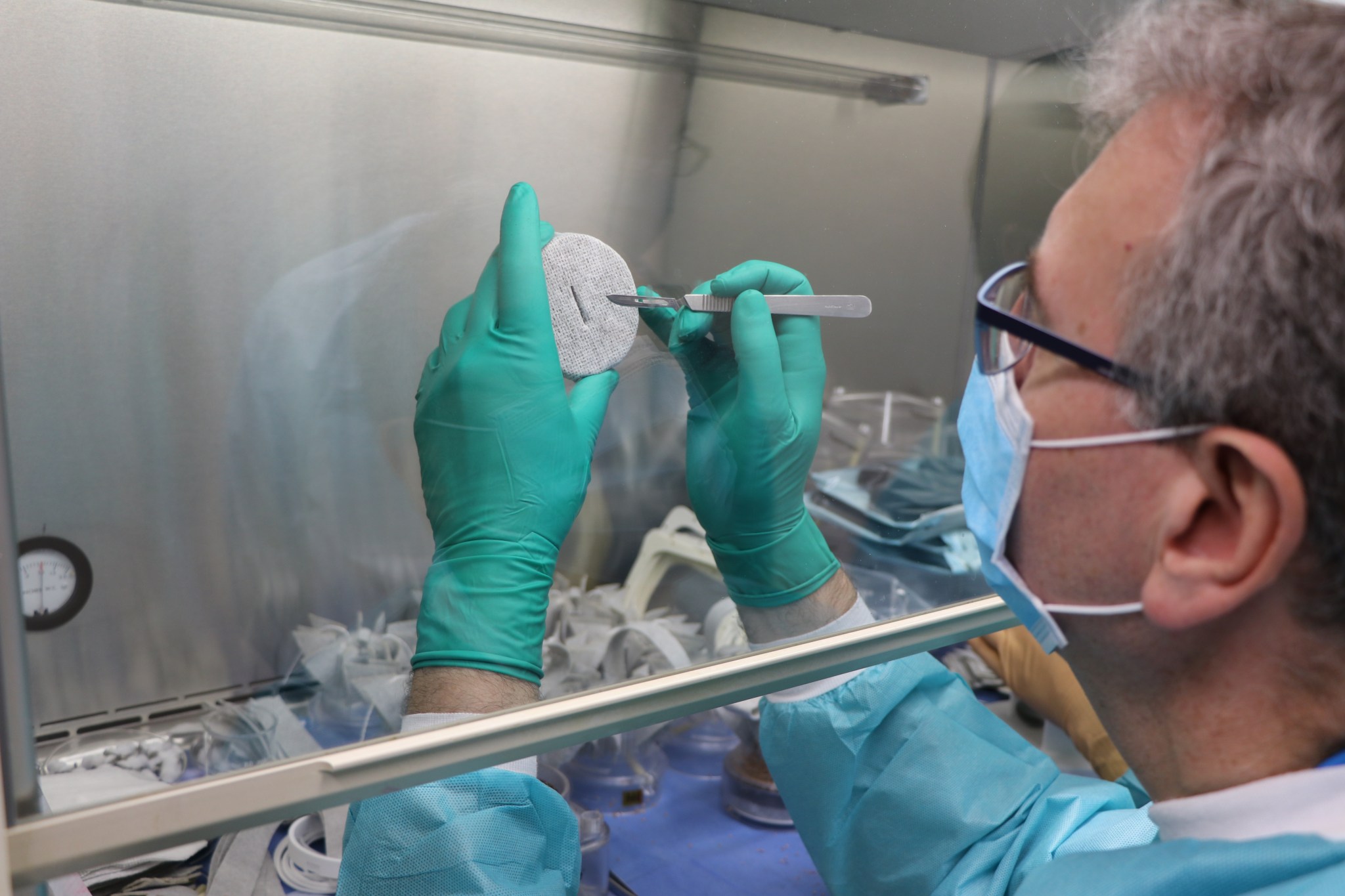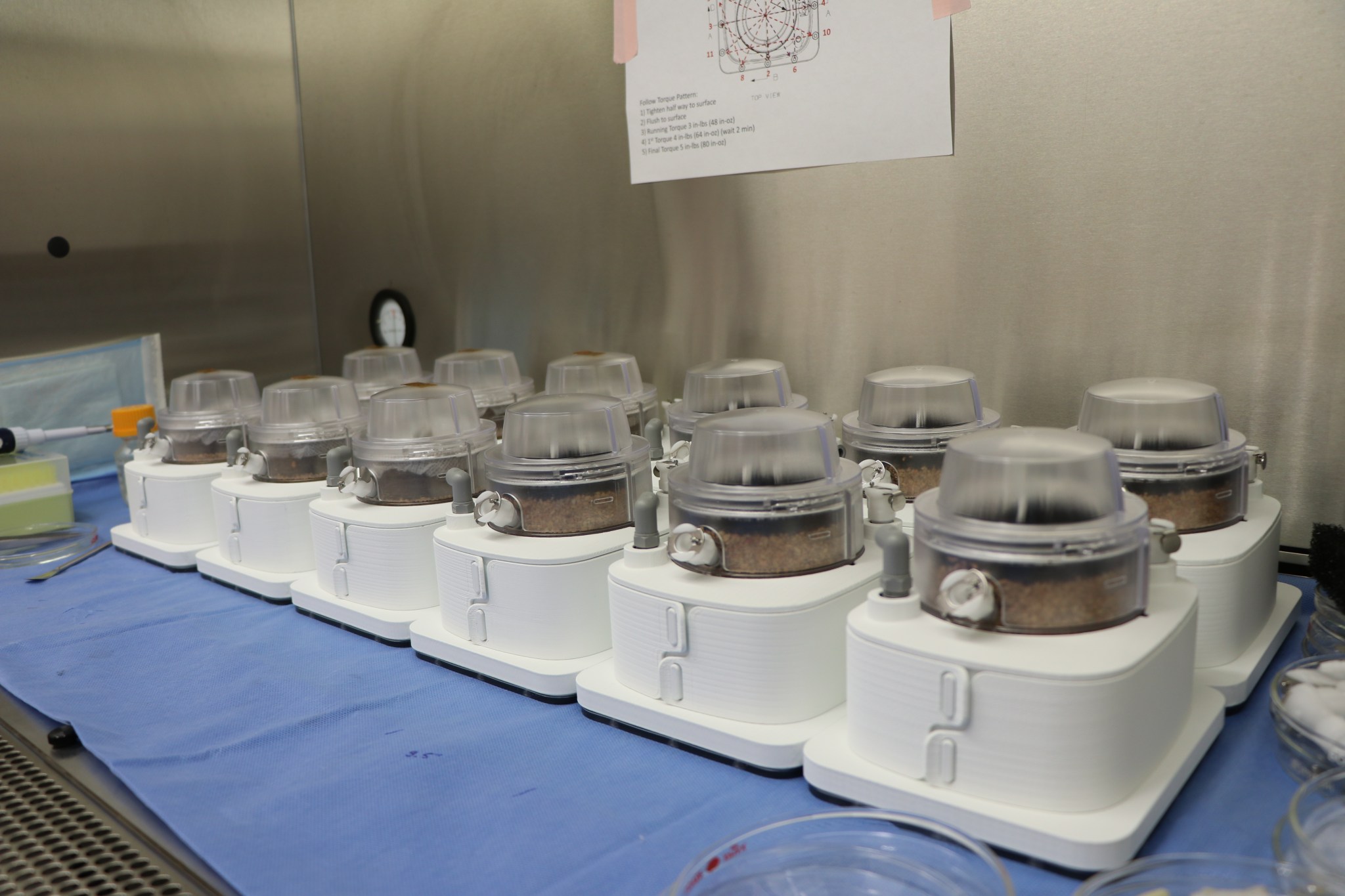
The challenge: getting water to behave the way it does on Earth while in a microgravity environment. A collaboration between NASA, Techshot, Inc., and the Tupperware Brands Corporation is working to get the solution just right.
For nearly 20 years, people have lived and worked continuously aboard the International Space Station, performing science to enable deep space exploration for NASA’s Artemis lunar exploration program and future human missions to Mars and to benefit people on Earth. The space station is about the size of a six-bedroom house, and it is a busy laboratory studying everything from fundamental science to practical applications, such as growing food in space.
In the current method of growing plants in space in the station’s Veggie growth chamber, astronauts water plants with a syringe, pushing it into containers called plant pillows, which hold a limited amount of water. This works well for leafy greens like lettuce, but for larger plants that require more water, NASA needed an alternate system.

A collaboration between NASA, Techshot, Inc., and the Tupperware Brands Corporation introduced a plant growth unit called PONDS, short for Passive Orbital Nutrient Delivery System. The PONDS units are an entirely passive system – meaning no electricity, no pumps and no moving parts – and the basic concept involves using a free-standing reservoir of water that plants can draw from when needed, cutting down on time astronauts would spend watering plants during the growth interval. The reservoir holds 400 ml – or about 13.5 ounces – of water, allowing astronauts to go a week or more before needing to water smaller plants again, or every couple of days for full-size plants.
“PONDS has kind of become the story of Goldilocks,” said Dave Reed, Florida operations director for Techshot. “The first time we tested in microgravity, too much water was delivered to the seeds. The second time, too little water. And the third time we hope is going to be just right. We’re in the fine-tuning phase now, and we’re excited to see this all come to fruition.”
Initially sent to the space station in 2018 and then again in 2019 after undergoing some design and operational modifications, PONDS is returning to the orbiting laboratory for further testing. Twelve PONDS units are being sent to the station for their third technology demonstration, titled VEG-PONDS-03, on SpaceX’s 20th Commercial Resupply Services mission. In addition to carrying this experiment, the cargo Dragon will deliver additional science investigations, including research of particle foam manufacturing, water droplet formation and the human intestine.
“You have to have this give and take, and a bit of trial and error; and I think part of that was seen in the first two PONDS experiments, with some things working and others not working,” said Howard Levine, creator of the initial PONDS concept and chief scientist of NASA’s Utilization and Life Sciences Office at the agency’s Kennedy Space Center in Florida.

When astronauts travel to the space station, all their food, clothes, and anything else they may need is delivered to them through regular cargo resupply missions. Once the design of PONDS is perfected, astronauts will be able to use this method to grow fresh vegetables and perhaps even fruits in space, something that crew members will rely on to supplement their diet as they venture deeper into space. “The longer the duration of the mission, [resupply] becomes less and less viable, and you want to be able to actually grow your food,” said Levine.
All 12 of the PONDS units being delivered will contain red romaine lettuce seeds and grow for 28 days inside the space station’s two Veggie growth chambers, and at harvest, crew members will have the opportunity to eat the lettuce they grew. At the end of the experiment, half of the PONDS units will be returned to Kennedy for engineers to evaluate. Six of the units have undergone design changes under the leadership of Levine, while the other six were given to Techshot and Tupperware to evolve.
“We’re used to designing and perfecting products to help prevent food from going to waste. When we were approached for this experiment a few years ago, we knew it was a great opportunity to take our long history of food conservation and apply it to the conditions in space,” said David Kusuma, Tupperware’s vice president of research and design. “Adapting and engineering design to fit the unique conditions in orbit has been an exciting and educational journey for us. Helping NASA and Techshot open doors for astronauts of the future to germinate, grow and harvest fresh fruits and vegetables in space is something we’re quite proud of.”
Some modifications to Techshot and Tupperware’s units include using narrower, skinnier wicks made of a different material to hold the plant seeds in place; adding a structure to the top of the units to keep sponges treated to repel water flat against the top surface to provide oxygen to the plants’ roots; and taking a piece of that same sponge and running it down the length of the flower pot-like root zone, providing a column of air going all the way to the bottom to ensure the plant roots are getting enough air. Levine’s units have larger and wider wicks for the plant seeds, and they will contain blocks of oasis foam – a material that has been used many times before in space to grow plants – near the wicks at the top to draw excess water away from the sprouting seeds. By exploring these design changes, NASA, Techshot and Tupperware hope to find the perfect balance for controlling how water behaves in space.

“Even people who are fluids experts – and we’ve worked with some of the best that NASA knows – tell us they’re constantly surprised by what fluids do in low gravity,” said Reed. “So, a lot of thought has gone into this design. Things that would seem arbitrary when you look at them are absolutely not. We have engineered the heck out of this system to get it to where it is today.”
The Space Life and Physical Sciences Research and Applications Division (SLPSRA) of NASA’s Human Exploration and Operations Mission Directorate at NASA Headquarters in Washington is sponsoring the Veg-PONDS-03 investigation as part of its mission to conduct research that enables human spaceflight exploration.




























